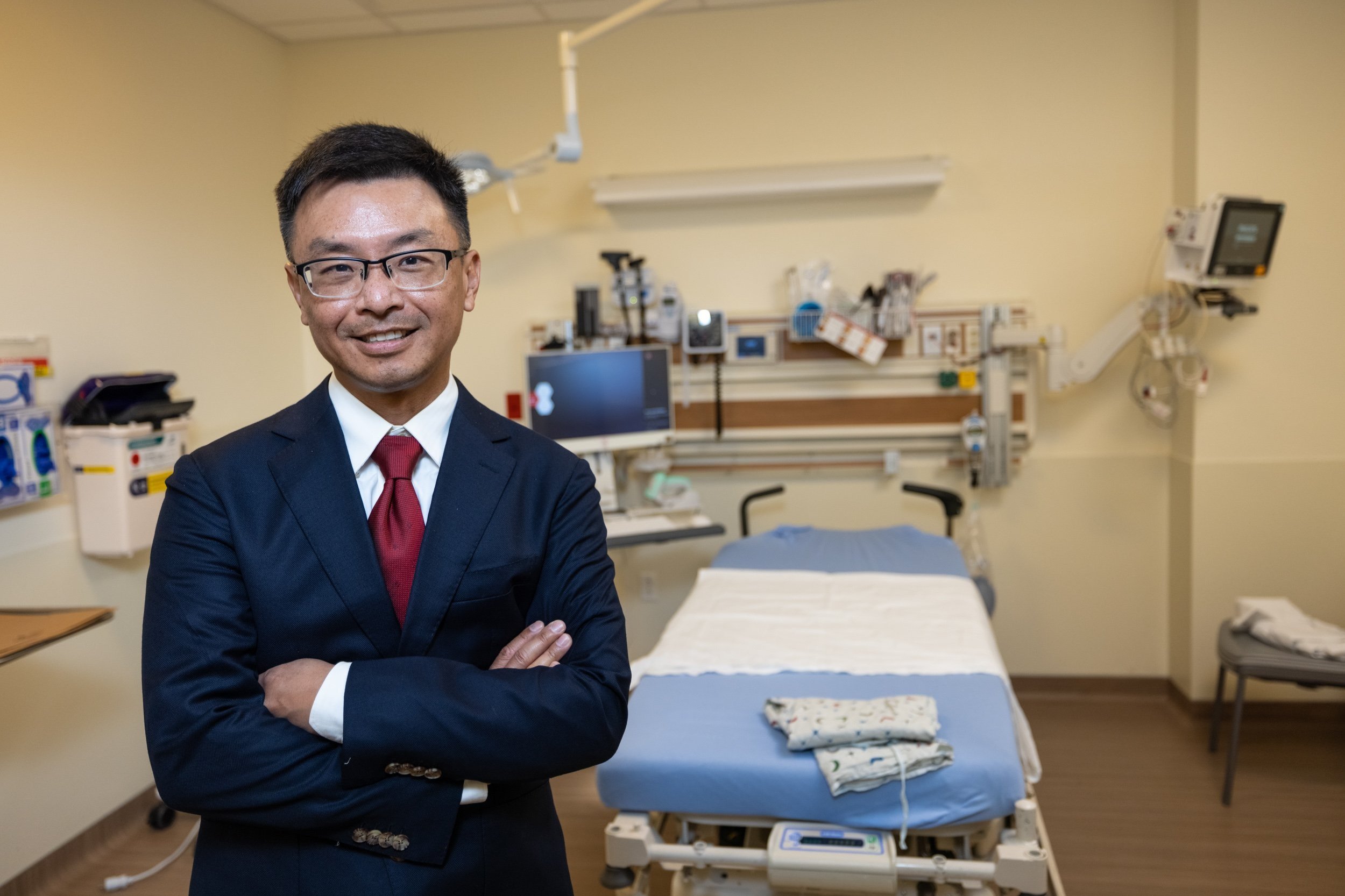Precision Emergency Medicine in Action
You can also access more stories of Precision EM in action by downloading the Stanford Department of Emergency Medicine magazine.
Increasing Access to Care
In a precision emergency medicine system, access to care is individualized to patients based on their specific needs and information in their health record. The right location for treatment varies by illness severity and may be dynamic as diseases progress. The patient and their data are the hub of precision emergency medicine, with the physical emergency department being just one of many avenues available to address acute patient needs.
Virtual Access
Telehealth, drive-thru testing, and ipads in patient rooms have expanded care options for Stanford’s Department of Emergency Medicine.
Community Partners
EMS physicians partner closely with first responders throughout two counties to ensure community members are trained in state-of-art care.
Optimizing Care
Prasanthi Govindarajan, MD explores the impact of state- and county-level stroke center bypass policies on patient outcomes.
Capitalizing on Technology & Digital Tools
Incremental improvement in the accuracy and timeliness of diagnostic testing -- with near immediate results for markers of infection, myocardial infarction, and organ failure -- have fundamentally changed emergency care over the past few decades.
Precision emergency medicine is fueled by continued advancements in diagnostic testing that empower physicians to further individualize the care of undifferentiated patients
Apps & Messaging
Brian Suffoletto, MD explores how mobile health interventions like text messages, phone apps and wearable devices can transform disease prevention and treatment options.
Rapid Technology
Sam Yang, MD is developing new technology to rapidly diagnose and treat sepsis.
Global Learning Platforms
Stanford Emergency Medicine International uses advances in online learning platforms to provide COVID-19 training to healthcare workers in low-to-middle income countries.
Leveraging Human Data
Human data are sourced, reconstructed, and integrated in ways never before imagined. Billions of data points are used to construct detailed portraits of patients. Utilizing machine learning, these in-depth profiles are compared to individuals with similar socio-behavioral phenotypes, as well as population data, to make ever more accurate diagnoses and outcomes predictions.
Informatics
The ED Data Analytics Committee is using informatics and machine learning to conduct research, monitor care quality, and employ artificial intelligence and machine learning.
Predicting Myocardial Injury
David Kim, MD’s automated deep-learning approach uses continuous bedside monitor data from early in a patient’s presentation to predict myocardial injury.
Targeting Brain Injuries
Angela Lumba-Brown, MD is developing new phenotypes for brain injuries that can help individualize care and improve outcomes.
COVID-19 Data Collection
The Stanford COVID Biobank provides COVID-19 data for local and national research
Advancing Population Health
Precision emergency medicine recognizes that social and environmental factors play a central role in health. Emergency departments can be a focal point of population health surveillance and intervention through deliberate collection of data. Data is used to create social phenotypes that, when combined with individual patient information, better predict risks, outcomes, and likely success of interventions. Strategic partnerships with the larger healthcare system offer great potential for disease detection, tracking, and interventions that are only now being explored.
Frequent ED Visitors
Jody Vogel, MD, vice chair for academic affairs for Stanford’s Department of Emergency Medicine, is investigating interventions to improve the quality of care for frequent emergency department visitors.
LGBTQ+ Healthcare
Mike Gisondi, MD provides online training to reshape how providers around the country approach LGBTQ+ healthcare.
Partnering with Promotoras
Jennifer Newberry, MD leaned into an existing partnership with Next Door Solutions to Domestic Violence in San Jose and local lay Hispanic/Latino community members to address intimate partner violence.
Parity in Emergency Medicine
Christopher Bennett, MD and Maame Yaa Yiadom, MD’s work in examining parity among Black and Hispanic residents and physicians will help ensure providers reflect patient diversity.
Reimagining Provider Education & Role
Widespread adoption of precision emergency medicine will require that we educate providers to use data and technology differently to enhance patient care. Physician education in health data literacy, digital health, and implementation science is imperative, especially given the wide variability in physicians’ knowledge and experiences in these domains. Expertise in these areas will be achieved only through a fundamental evolution of medical education based on this new conceptual model.
Precision Learning
Holly Caretta-Weyer, MD is developing an ecosystem of assessment and predictive learning analytics to optimize emergency medicine training.
Teaching Health Equity
Italo Brown, MD expands training for future physicians on health equity and social justice issues in medicine.
Targeted Physician Training
Stanford Emergency Medicine Residency Program expands diversity representation among future physicians and enables residents to hone skills in specialized niches.

















